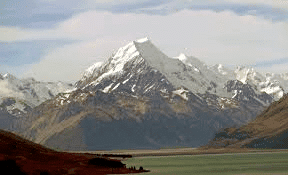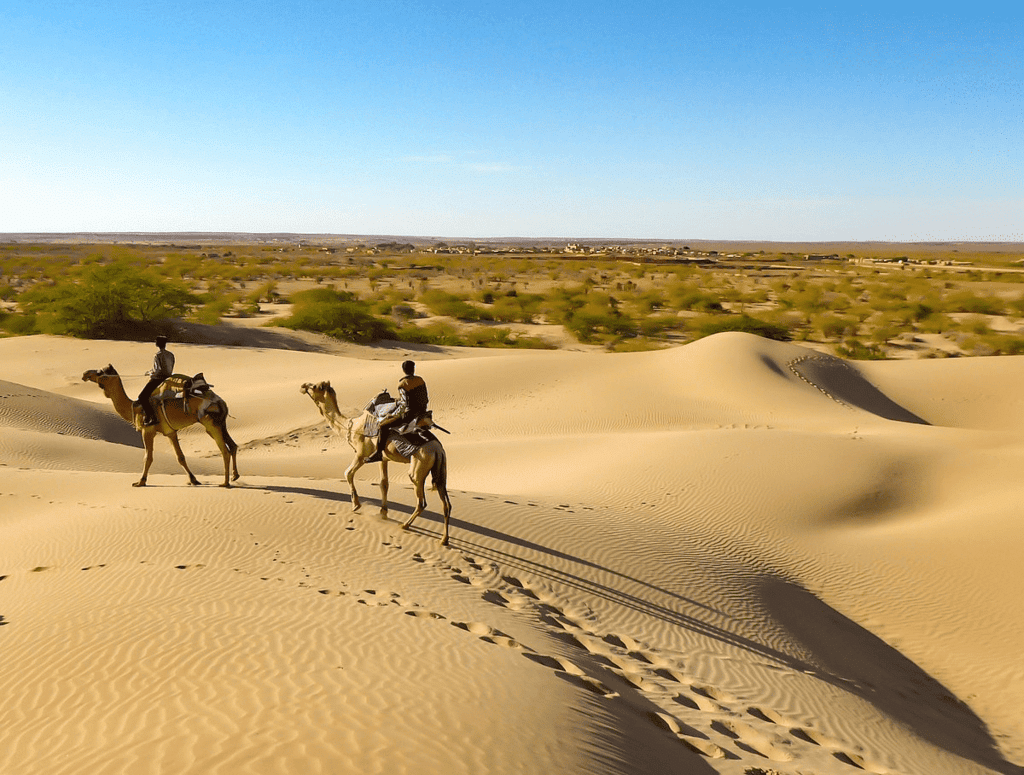Unit Test Solutions: Landforms and Life | Social Studies for Class 6 PDF Download
Attempt all questions. Time: 1 hour, M.M. 30
- Section A - Question numbers 1 to 5 carry 1 mark each.
- Section B - Question numbers 6 to 8 carry 2 marks each.
- Section C - Question numbers 9 to 11 carry 3 marks each.
- Section D- Question number 12 to 13 carry 5 marks each
Q1. What is the average altitude of the Tibetan Plateau? (1 Mark) (a) 3,000 meters
(a) 3,000 meters
(b) 4,500 meters
(c) 6,000 meters
(d) 2,000 meters
Ans: (b)
The Tibetan Plateau, also known as the "Roof of the World," has an average altitude of 4,500 meters.
Q2. Fill in the blank: The Ganga River originates in the _______. (1 Mark)
Ans: Himalayas
The Ganga, also called the Ganges, originates in the Himalayas, specifically from the Gangotri Glacier.
Q3. True or False: The Aravalli Range is considered to be a young mountain range. (1 Mark)
Ans: False
The Aravalli Range is considered one of the oldest mountain ranges, having been worn down by erosion over millions of years.
Q4. Which of the following is a feature of a plateau? (1 Mark)
(a) Steep slopes with a flat surface
(b) Low elevation with valleys
(c) Covered with forests
(d) Large rivers flowing through it
Ans: (a) Steep slopes with a flat surface
Plateaus are elevated areas with steep sides and a relatively flat surface.
Q5. What is terrace farming? (1 Mark)
(a) Farming done at the base of mountains
(b) Cultivation on sloped land by creating steps
(c) Farming in valleys
(d) Farming using advanced machinery
Ans: (b)
Terrace farming is the practice of growing crops on the slopes of mountains by creating flat steps to prevent soil erosion.
Q6. Explain why snow-capped mountains are found at high altitudes. (2 Mark)

Ans: Snow-capped mountains are found at high altitudes because the temperature at these heights is low enough for precipitation to freeze into snow. The snow remains on the peaks, especially in regions where temperatures remain low year-round.
Q7. What makes the Ganga plain so fertile? (2 Mark)
Ans: The Ganga plain is fertile because it is made up of sediment deposits carried by the Ganga River and its tributaries. These sediments enrich the soil, making it ideal for agriculture.
Q8. How does the physical landscape of the Himalayas affect human life and culture? (2 Mark)
Ans: The Himalayas create a diverse environment, with steep slopes influencing farming practices such as terrace farming. The region is also rich in cultural significance, with many holy sites and pilgrimage routes located in the mountains. Moreover, the harsh climate leads people to adapt by relying on activities like herding and mountain tourism.
Q9. Discuss the environmental impact of excessive tourism in the mountains and suggest ways to manage it sustainably. (3 Mark)
Ans:
- Excessive tourism in mountain regions can lead to environmental degradation, including deforestation, soil erosion, and waste accumulation.
- Sustainable tourism can be managed by limiting the number of visitors, promoting eco-friendly practices, and ensuring proper waste management systems.
- Encouraging responsible tourism and educating tourists about environmental conservation can also help protect fragile mountain ecosystems.
Q10. Explain the importance of the Ganges River in the cultural and economic life of India. (3 Mark)
Ans:
- The Ganges River is not only a vital water source for agriculture and daily life but also holds immense cultural significance.
- It is considered sacred by Hindus, with numerous religious festivals and rituals conducted along its banks.
- Economically, the river supports transportation, agriculture, and fishing, making it integral to the livelihood of millions.
Q11. How do plateaus influence the types of industries in the regions where they are found? (3 Mark)
Ans:
- Plateaus, with their mineral-rich soil, often host industries related to mining, as they are rich in resources like coal, iron, and manganese.
- For example, the Chhota Nagpur Plateau in India is a hub for mining activities.
- The harsh terrain may limit agricultural practices but creates opportunities for resource extraction and associated industries.
Q12. Analyze the challenges faced by people living in the Thar Desert and how they have adapted to these challenges. (5 Mark)

Ans:
- People living in the Thar Desert face significant challenges due to its harsh environment.
- The desert is characterized by large, dry expanses with very little precipitation, making water scarce and survival difficult.
- High temperatures and limited vegetation further restrict resources, posing challenges to sustaining life and livelihoods.
- Despite these conditions, communities have adapted remarkably.
- They rely on resilience and adaptability, living in or migrating through the desert with practices suited to the arid landscape.
- For instance, their main occupations involve journeying and fighting, reflecting a nomadic lifestyle that allows them to move in search of scarce resources rather than depend on fixed settlements.
- Additionally, they have developed rich cultural traditions, such as folk songs and legends, which celebrate their connection to the desert and strengthen community bonds.
- These adaptations highlight how people in the Thar Desert have turned a challenging environment into a livable home, showcasing human endurance in extreme conditions.
Q13. Discuss the process of sediment deposition in river plains and its role in agriculture. (5 Mark)
Ans:
- Sediment deposition in river plains begins with rivers originating in mountain ranges, where they collect particles of rock, sand, and silt known as sediments.
- As these rivers flow from the mountains, they carry the sediments downstream.
- When they reach the flatter, gently undulating plains, the rivers slow down and deposit these sediments, forming fertile floodplains.
- This process enriches the soil, making it ideal for growing a variety of crops.
- In the Ganga plain, for example, this fertile soil supports agriculture, producing food crops like rice, wheat, maize, barley, and millets, as well as fibre crops such as cotton, jute, and hemp.
- The fertility from sediment deposition has historically enabled the development of early civilizations and continues to sustain a large population, with over one-fourth of India's people living in the Ganga plain.
- However, modern reliance on irrigation to enhance this agricultural productivity has led to groundwater depletion, posing a future challenge to sustaining these fertile lands.
|
23 videos|171 docs|28 tests
|































